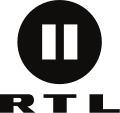 | |
| Country | Germany |
|---|---|
| Broadcast area | Europe |
| Affiliates | RTL II You |
| Headquarters | Grünwald, Bavaria, Germany |
| Programming | |
| Language(s) | German |
| Picture format | 1080i HDTV (downscaled to 16:9 576i for the SDTV feed) |
| Ownership | |
| Owner |
|
| Parent | RTL Deutschland |
| Sister channels | RTL9 |
| History | |
| Launched | 6 March 1993 |
| Former names | RTL 2 (1993–1999) RTL II (1999–2019) |
| Links | |
| Website | rtl2 |
| Availability | |
| Terrestrial | |
| Digital terrestrial television | Channel numbers vary in each region |
RTL Zwei (stylised as RTLZWEI), formerly spelled RTL 2 and RTL II, is a German-language television channel that is operated by RTL2 Television GmbH & Co. KG . RTL2 is a private general entertainment (Vollprogramm) tv channel on the basis of the Interstate Broadcasting Agreement (Rundfunkstaatsvertrag). Variants of the channel are produced for Austria and Switzerland, with their own advertising. They can be received via cable networks in Austria and Switzerland, and more widely by digital satellite. RTL Zwei is part-owned by RTL Group in Germany.



